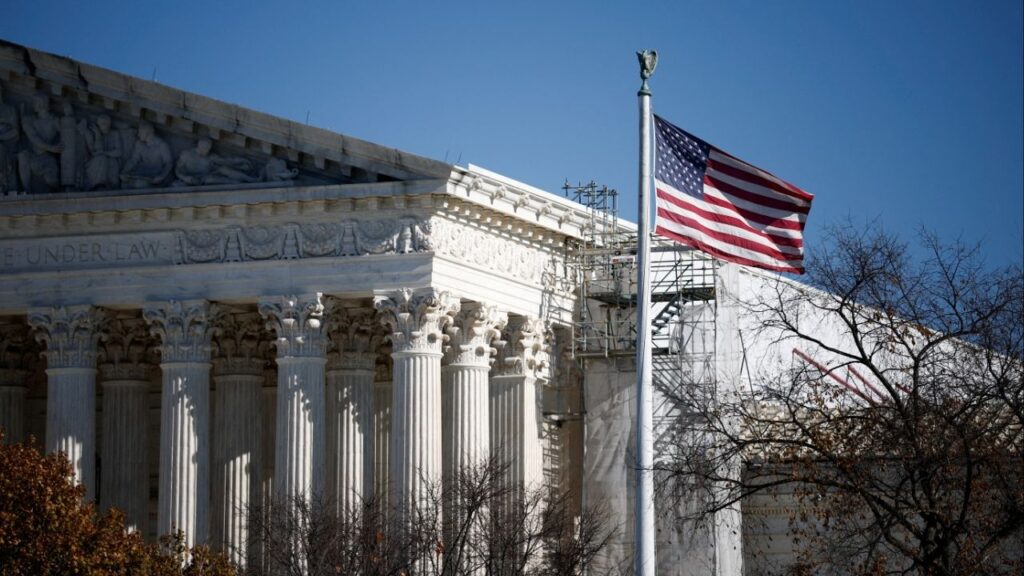Share
The mid-elevation type of forest ponderosa pine and mixed conifer used to have about 60 trees per acre in California about 150 years ago.
Now, a UC Davis and USDA study says California forests 165 to 170 trees per acre — and that may be a conservative estimate.
“That’s about a 3- to-1 increase from what it used to be like historically,” UC Davis researcher and U.S. Forest Service research ecologist Malcolm North told GV Wire℠ from his home in Mammoth.
“There’s some other studies that suggest the forests (in California) are somewhere between three and five times as dense as they used to be.”
North, who played a large role in the UC Davis/USDA study, said that 600 trees per acre in some areas is possible. He said that fire suppression has changed forest densities and resulted in aggressive blazes such as the Creek Fire.
North believes there is a place for controlled burns and mechanical thinning. But, something less talked about could be the key to restoring healthy, fire-resistant forests — biomass.

Biomass Plants

“There’s some other studies that suggest the forests (in California) are somewhere between three and five times as dense as they used to be.” — Malcolm North, UC Davis Researcher and U.S. Forest Service research ecologist
Biomass focuses on removing small trees and underbrush from the forest and burning it for electricity.
“I frankly just don’t understand any rationale for being against those (biomass plants),” said North. “It would be a huge help to the problem.”
He said that any fears the Sierra Club or Center for Biological Diversity might have about this being a nefarious way for logging to start up again should be dismissed because the biomass mills can only process items of no more than 12 inches in diameter.
However, Shaye Wolf, climate science director for the Center for Biological Diversity told GV Wire℠ by email, “Like coal and oil, biomass is a carbon-burning form of energy production that emits carbon dioxide and contributes to the climate crisis. In fact, biomass power plants are California’s dirtiest electricity source. They release more carbon at the smokestack than coal and leave less carbon stored in the forest.”
She says biomass mills are so inefficient that they’re California’s most expensive energy source.
California Biomass Energy Alliance executive director Julee Malinowski-Ball said, “We’re like the garbage man. Someone else has created the mess.”
The CBEA website describes biomass power as “carbon neutral electricity generated from the reuse of renewable organic used wood, wood byproducts and wood residues that would otherwise be dumped in landfills, openly burned, or left as fodder for forest fires.”

“It’s non-merchantable timber up there that can be taken to a biomass facility within a reasonable distance.” — California Biomass Energy Alliance executive director Julee Malinowski-Ball
Ball says the only way biomass mills make money is by contracting with power companies to sell the power produced when they burn wood waste.
“It’s non-merchantable timber up there that can be taken to a biomass facility within a reasonable distance,” she said. Ball says California Senate Bill 859 signed by Gov. Brown in 2016 guaranteed five-year contracts for biomass mills with PG&E, Socal Edison, and San Diego Gas and Electric. Those contracts have been extended another five years.
There are more than 20 biomass mills in California, including one in Malaga.

“This bill will help adapt forest management across California, Montana, and the West to the long-term effects of climate. Creating a market for biomass will provide energy while reducing the fuel that helps fires spread quickly.”— Sen. Dianne Feinstein (D-Calif.)
Recently, Sens. Dianne Feinstein (D-Calif.) and Steve Daines (R-Mont.) introduced the Emergency Wildfire and Public Safety Act. If passed, the bill would create a program to incentivize the collection of woody biomass and help expand processing facilities to make biomass more economically viable.
“This bill will help adapt forest management across California, Montana, and the West to the long-term effects of climate. Creating a market for biomass will provide energy while reducing the fuel that helps fires spread quickly,” said Feinstein in a news release.
Role of Thinning
“There’s definitely a really effective role for thinning,” said North. “Particularly when the thinning is not simply about cutting down the big trees but it really focuses a lot on reducing the density of the forest and taking care of the fuels problem.”
He says most of the fuel load is in the form of smaller trees that aren’t economically viable for logging companies. “By the time you get them (trees) down to the mill you’ll probably spend more on gas than you’ll get for those logs,” North said.
Most of what’s happened with fire suppression doesn’t often produce economic returns. You have to take intermediate or larger trees to make it viable.
But the “big trees are often the ones you want to hold onto and keep,” North said.
However, areas dramatically impacted by the drought are ripe for logging that pays its way.
“There are reasons to take intermediate-sized trees, let’s say 20 to 24-inch diameter tree. That tree will help pay for the operation.”
Most of the people he works with in the Forest Service tell him if they had the ability to take four to eight mid-sized trees per acre, the operation will pay for itself.
He says economic forces are a big challenge for the Forest Service.
“Most of the time, you’re going to have to do it with what the Forest Service calls a service contract,” explained North. “This means you have to pay people to come in, cut down the trees, they often stack them in a pile, and a year later after they dry, they burn them.”
He said this practice results in a cost of $1,000 to $1,500 an acre to the Forest Service.
North did a Sierra-wide analysis that showed only 28% of the forests can even be mechanically thinned. He estimated that 72% of the forests will require something else such as prescribed fire burns to provide fire resistance and good health.
Fire Suppression Created the Problem, Controlled Fire Could Be the Remedy
“Every time we jump on a fire and put it out it just kicks the can down the road,” said North. He says when you do eventually get an ignition later it’ll be when wind gusts fan the flames and won’t allow firefighters to suppress it even if they arrive quickly.
“You end up with sort of a selective force pattern where you put out all the easy fires,” North said. “But the ones that get away from you — which are literally only 2%-3% of the fires — they account for 95% of the area that burns out there in wildfires.”
North said that most professionals in the scientific community believe that controlled burns are the way to deal with this problem. Fire crews, he said, may want to allow a lightning strike-induced fire to burn, if it’s not anywhere near homes, to let fires do a lot of the work out there.
“Frankly, each National Forest should be doing about 60-70,000 acres of burning a year, and not 3,000 acres every three to five years,” North said.
Regulatory Hurdles
North says there are many regulatory hurdles the Forest Service must overcome before it can properlu manage a forest.
The National Environmental Policy Act (NEPA) dictates that archaeological surveys, plant surveys, and public comments have to be done any time the Forest Service wants to do a prescribed burn.
“I’m not anti-environmental, but I think a lot of the management community and a fair amount of the science community feels like we really need to figure out a way to streamline the process,” North said.
Categories

MAHA Activists Urge Trump to Fire His EPA Administrator

Meta Strikes Multiple AI Deals With News Publishers

















